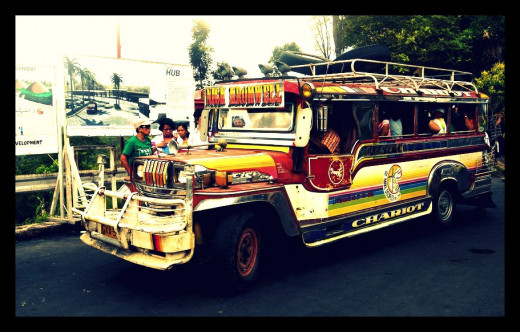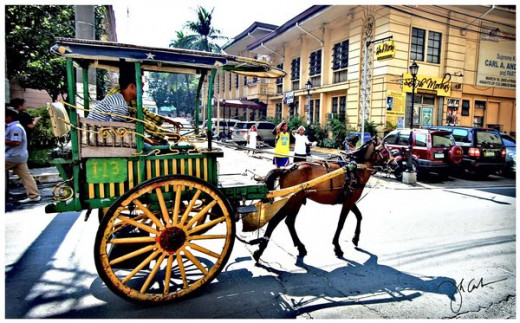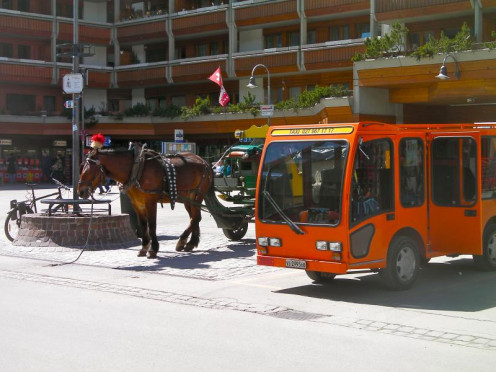How to Shoot Transportation Photography

Modern vehicles can make for really interesting photographs and can easily fit in the theme, are easily found and there are plenty of them.
However, in our modern world modes of transportation which may seem as out of place, antiquated and backwards offer viewers the chance to see and in a way experience what others do in order to move form lace to place.
It also opens our eyes to the facts that not everyone in the world has the same means as we do and shows the length of human ingenuity when any of these modes of transportation seem like two or more vehicles put together.
Have you ever seen a vehicle made from half a minivan, on spoke wheels and powered by a horse? Probably not but they are very common in many parts of South America and The Caribbean.
Transportation photography is very simply recording images of anything that we humans use to move from place to place.
The images do not necessarily have to completely be of vehicles themselves but should also include the interaction of people with these vehicles. In other words; try to tell a story.
Whether is how we take ourselves from here to there or how we manage to transport goods for commerce, many of these images have their certain appeal and can be used by various publications not to mention general photography publications with the key being that the resulting images must be technically perfect and offer a viewer an interesting photographic story and display.
The images should tell a story. A story of movement and what this ability means to the people would be a good starting point.
If for example you take a photograph of a man riding a donkey car then the story would signify that this man has perhaps no other means of transportation and that in the country where the image was taken it is a commonplace sight.
This does not mean that you should avoid ages of the vehicles alone but adding the human interaction creates a connection with the viewers. The human element is a powerful tool when found in any image.
When embarking on your photographic journey look for subjects that have an appeal and pay close attention to how you compose the shots. Include people and include some of the environment so that the viewers of such images get a better idea of the type of location and even perhaps get a small glimpse of the country.
With that said, if you concentrate on only one part of the country or general area, then you are likely to end with very similar images. This project is better suited if you have the capacity of traveling and exploring many different transportation options.

What types of transportation are found where you live?
A project worth considering is to compile a good grouping of transportation photographs and use them towards the production of an e book.
However, you must accompany these images with a story detailing the locations, the lives of the people, and other interesting tidbits that can bring your viewers into the reality of life in places where the modern conveniences of modern transportation are not readily available.
This does much to capture the interest and imagination of your viewers. Whether you capture the images first or write the story behind them first is of no consequence but from experience I have found that using the images to draw upon works better.

When conducting this project keep in mind that if you take images that show people and they are clearly identifiable or rather recognizable it would be a good idea, even an ethical one, to ask for their permission.
In more developed countries people might look at you funny if they realize that your are taking their pictures. However in some parts of the world their reaction might not be as "friendly" as you may be used to. Off course if the images are of a really odd piece of transportation, like a half & half, most individuals will realize that the vehicle and not they is the focusing point and they may be less concerned with their inclusion into these photographs.

Besides offering your audience an array of interesting photographs, remember that these images have to be technically sound and pleasing to look at.
Submitting them to various publications requires a certain degree of high technical quality alongside offering an editor a reason for buying them from you.
You must also research the publications to whom you would want to submit.
A general photographic publication may not be inclined to use these images if they do not fit in with their general theme but a publication focusing on advancements in transportation and life in a particular region of the work might be as well as publications such as National Geographic Magazine.
A good technique is to do your research first and try to build a set of images which fit the theme of a publication in which you are interested in submitting your images to.
Fitting into the niche of each publication is often the most important factor to consider when submitting your photographs.

What is the strangest means of transportation that you have seen?
- Hilarious Ways of Transportation (43 pics)
Here are some radical solutions how to transport goods, animals and people in the most unusual way.
© 2013 Luis E Gonzalez










